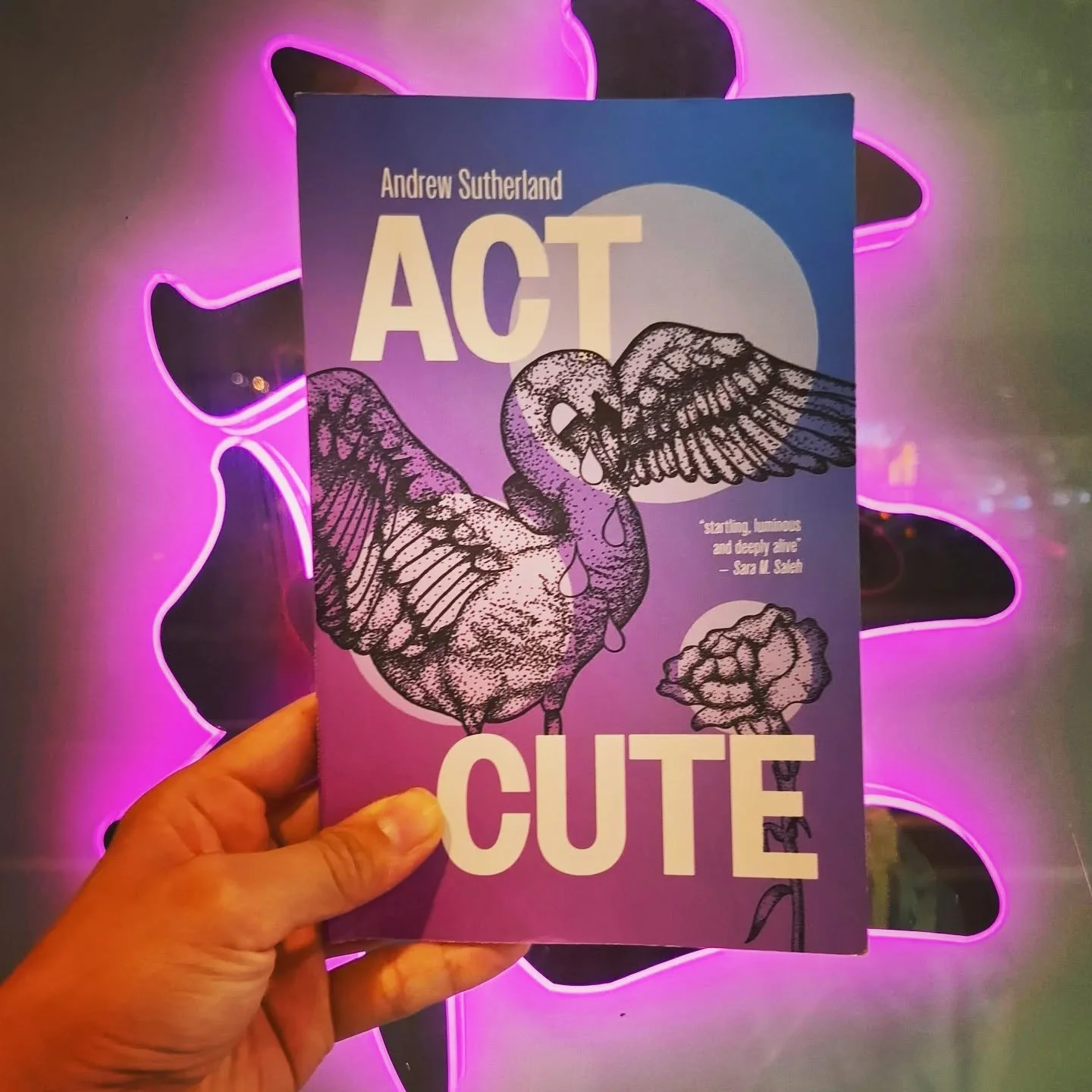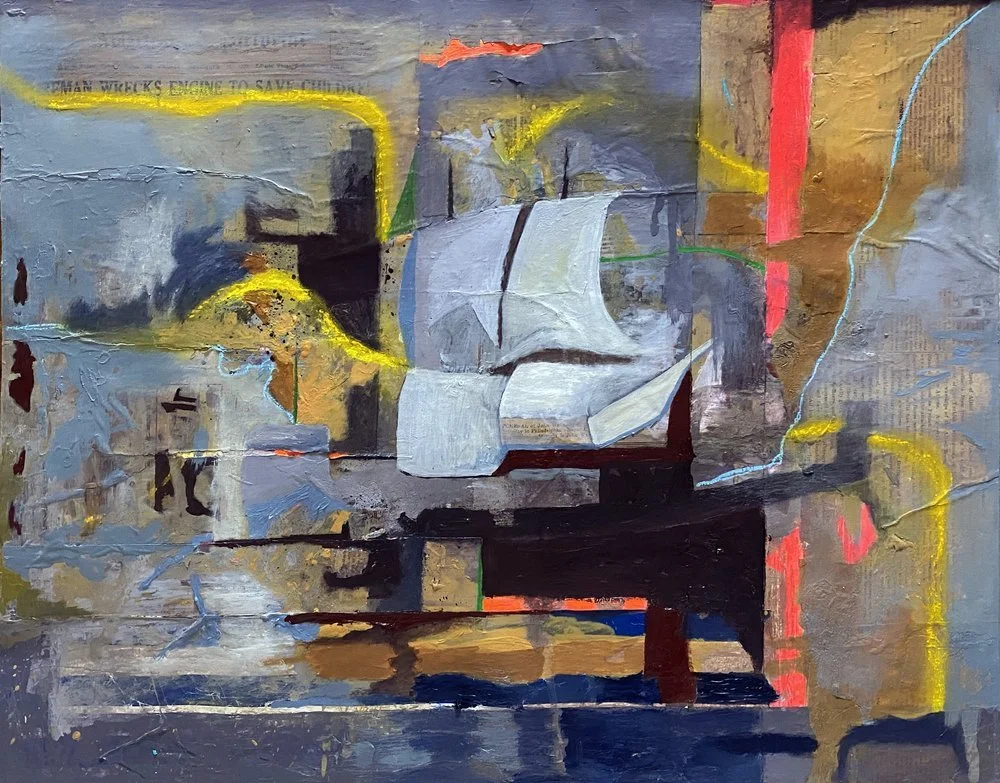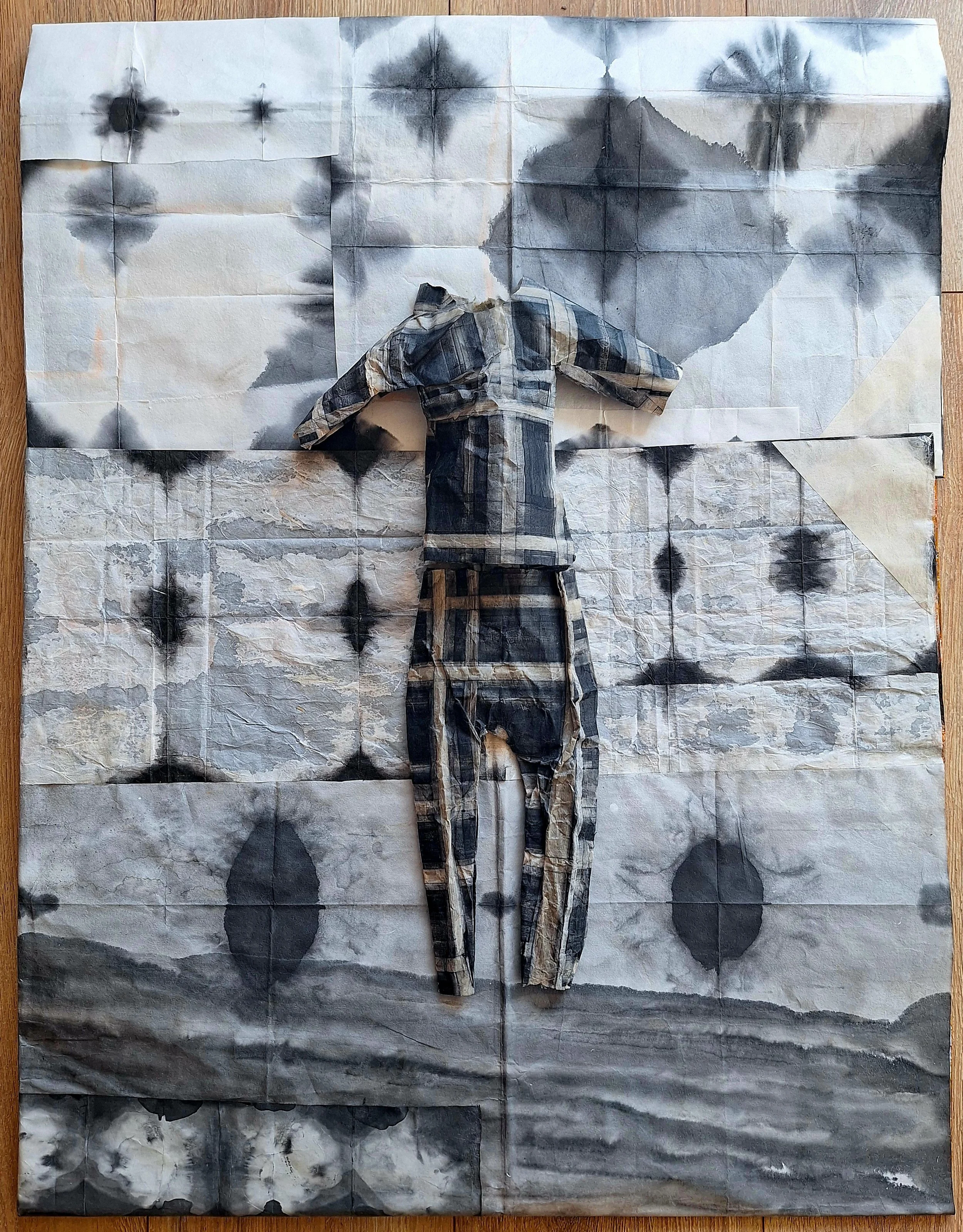Blooming Beyond the Event Horizon
By Jack Xi
Review of All the Flowers Kneeling by Paul Tran (USA: Penguin 2022)
-
This review contains discussions of sexual assault, child sexual abuse, self-harm, and violence.
The summer I read Paul Tran’s All the Flowers Kneeling was the summer in which I went off my medication for depression. My psychiatrist and I agreed that I knew what I had to do to cope. But as summer began, it became clear I had taken on too many commitments, trying to redeem and justify my existence to myself. I knew what I had to do, but I was doing none of it.
What lurks beneath feigned certainty, beneath our rationalizations for our behavior, beneath the language of objectivity? What happens when what we think is healing really isn’t? How do we survive?
In their debut collection, All the Flowers Kneeling, Paul Tran speaks to these questions and more as they delve into their experiences as a queer, second-generation Vietnamese-American survivor. While I am neither a survivor nor a second-generation immigrant, much of Tran’s collection spoke to what I was—and am—going through.
Tran structures Flowers in tight pairs and series of poems, mostly blank verse written from a first-person perspective. They open the collection with “Orchard of Knowing” and close with “Orchard of Unknowing”. Two halves of the sonnet crown “Scheherazade/Scheherazade” appear at opposite ends of the text. Two poems titled “The Cave” act like the halves of a hinge. Many series of poems grid the text: one set includes three poems all titled “Scientific Method” and featuring personas from scientific investigations; another set, of ekphrastic poems titled after Renaissance and Gothic paintings, explores Tran’s emotional journey.
Through it all, Tran uses a suite of recurring images as touchstones. Scenes from their life connect with scenes of their mother’s history; scenes from prehistory; organisms ranging from deep-sea fish to desert flowers; and figures from Buddhism, classical mythology, Catholicism, and Enlightenment science. These connections gift the collection with a unique and moving set of visual motifs.
Tran’s collection comprises four segments. Across these, they use three pairs of opposites to frame their experiences as a survivor: darkness and light, depth and height, master and subject. Tran’s first experience of sexual abuse occurred at the hands of their now-estranged father. Their father is godlike, carrying them through an “imitation of heaven” even as he does indelible harm. To cope with this abuse, Tran turned to self-harm and entered an isolating relationship with their next assaulter, whom they describe as a “god” or “king” of the “underworld”. Tran submits themself to this second assaulter in the hope of finding “attention”, of being “wanted” despite feeling “ugly”. Once their second assault is over, they are “humiliated” by their “desire for more darkness”, their “return” to the site of assault, “night after night”, for more sex with their assaulter. In this collection, darkness and depth are spaces where Tran is subjugated and harmed.
Eventually, Tran cuts ties with their most recent assaulter and finds a more sustainable kind of survival. Core to that journey is self-reflection, particularly through art. As Tran writes in “Scheherazade/Scheherazade”, the “deliberation” of poetry is freeing: “refrain[s]” are a method of “resistance”, of “breaking a pattern”. Tran’s poem “The Cave” features a prehistoric human permitting themself “to be taken” deep into a cave. The double entendre of “taken”, meaning journey but also rape, signals a parallel with Tran’s own dark-shrouded journey. The person eventually chooses to light a “lamp” and blow their handprint onto the wall with some paint, becoming “light- / headed” as they revel in their work. With clever enjambment, Tran signals that the process of creating art is what saves them. Their agency and clear sense of their position in the world illuminate the way out of the dark:
Done with darkness,
someone had the idea to fashion a lamp
from stone. Animal fat. Flint.
They held the lamp
in front of them. Light no longer
behind them. […]
Then someone had another idea.
They ground hematite in an ochre-stained shell.
They sucked the pigment into their mouth with a bird bone.
They swished the powder back and forth.
They became light-
headed. Between darkness and light
someone found a wall
history had set aside for them.
They placed their hand on the wall.
They blew paint on their hand.
Someone thought, This was the best idea I’ve had.
Tran likewise uses their poetry to confront how they chose “hurt” as “a way to heal”, trying to find “redemption”, “knowledge”, or “forgiveness” in their “suffering”. Indeed, as we move deeper into the collection, Flowers’ opening poem takes on a new cast. In that poem, Tran’s Buddha-persona confronts a “you” who seeks to kill them and remove one of their fingers for a necklace of human fingers for “your king”. The “you” initially seems to refer to us readers, who need to set aside harmful notions of what a ‘good survivor’ looks like. However, the poems in Flowers’ third and fourth sections make “Orchard” read like a plea from Tran to themself, part of their journey towards real healing, towards rejecting the abusive “king” and rejecting acts of self-harm.
The recurring king- or master- figure in Tran’s collection is also associated with imperialism and racism, as evidenced by Tran’s references to white Enlightenment and Renaissance figures. Tran thus neatly implicates their second assaulter in doing racist violence to them, reminding us of the violence that Western powers and ways of knowing have inflicted upon the world.
One such way of knowing is so-called ‘objectivity’, the cruelty of which appears most starkly in Tran’s “Scientific Method” poems. In them, Tran takes on the personas of abject subjects: the corpse of a marginalized person dissected for anatomical knowledge and used to bind an anatomy book, the young monkeys in an experiment with inanimate surrogate ‘mothers’, a mimosa plant kept away from the sun. Through it all, Tran asserts that their “Master” and his spectators, identified with their abusers and those who perpetuate harm against survivors, are “soulless”––sullied by their acceptance of knowledge obtained by violence.
Every aspect of myself
[…]
—he dissected. Documented. Paraded
before his surgical circus. His spectators and skeptics
oohing and aahing. Shuffling in their seats. Fanning back the heat.
Their interest with what was found in me formed
from their interest with what could be in them . . .
I wanted to tell them that
they weren’t special. They had no soul
beyond their investment in the function of the soul. Their gaze
not absolute. Not pure. Not empirical. Only imperial. Impure. Approximate.
But Tran finds strength in their position as a subjugated figure, claiming to understand the world on a deeper level than their abusers. To Tran, they owned their Master; whatever their Master meted upon them was also “done to him”, and as the subjugated one, they knew they had a truer “source” of “life”, a “proper sovereign” beyond their Master’s violence. That “proper sovereign” is the sun that Tran-as-mimosa follows, even in darkness.
To Tran, institutional responses to assault are tied to the notion of knowledge obtained through violence. In the third poem of the series “I See Not Stars”, Tran describes how “[everything] was a thing to do well so that others felt comfortable” and how they were “a cell / Vanished from the [dean’s] spreadsheet with each meeting”. They are described as imprisoning themself and are encouraged to work towards performing functionality on others’ terms instead of towards their own well-being. Such processes erase Tran’s personhood while forcing them to explain their trauma over and over again.
Worse still, in “Incident Report”, the report of sexual assault Tran must fill out seems to share attributes with the assaulter. It gives them “no option” but to “go along with the [cissexist] Sex” options on the form. The university also seems not to act against Tran’s assaulter. In the fourth poem of “I See Not Stars”, the assaulter is free to stand “next to [Tran]” during a graduation ceremony. The university thus becomes akin to and enables Tran’s assaulter. Even if the university helps Tran to confront and choose their “survival strategies”, the monetary and psychological “cost” of the bureaucratic, rationalized process “traps” Tran and does further violence to them.
While rejecting harm to themself as a path to knowledge, Tran finds survival through accepting contradictions. As they have said in an interview, their project is not to write about survival as purely triumphant or as an ending they have already reached but rather to reflect their real, ongoing journey. Part of that journey is ambivalence. In All the Flowers, Tran asserts that being open to mess and possibility is important to moving forward. They describe “painters [...] [painting] over / their paintings”, “[renouncing] expectations”, being “ambivalent” about whether they were a “Good survivor” or a “Bad” one since “survival was survival in the end”.
The last section of Tran’s collection elaborates on what it means to survive and find a better life, with familial support, queer joy, and the power of self-reflection carrying them closer to “the end”. Survival is, of course, not a one-person affair. Tran’s mother and sister are guiding presences throughout the collection and especially toward its end. Learning to “[refill] and [empty]” their expectations of themself comes as Tran cooks the canh chua their mother “taught [them] to make.” In “Scheherazade/Scheherazade”, they show how her ever-changing recounts of her trauma as a refugee of the Vietnam War are her own urgent method of survival, of “vengeance”. In “The Santa Ana”, it is Tran’s sister who helps them do their makeup and reminds them, echoing Toni Morrison, that “the greatest thing” for the two of them is being “[their] greatest thing”.
Nature, too, has a role to play. Tran portrays their liberation in the closing poem “Orchard of Unknowing” as uniting with and listening to the nonhuman forces around them:
Where I run naked but for my snakeskin coat
so fast through wind I become wind.
Where the flowers—opened, closed—tell me
things have happened. Are happening. Are about to.
In the “The Santa Ana”, however, Tran wants “all the flowers kneeling” before their rebellious queer charge against “Heaven‘s” injustice. At this, I was confused: why did they want the flowers subservient to them if, elsewhere in the collection, flowers bent away from the sun meant victims submitting themselves to violence? Why align liberation with subjugating others? Why this as the collection’s title?
Perhaps my mistake was in reading the kneeling in “The Santa Ana” as purely negative. After all, Tran’s collection is all about shifting narratives and accepting the potential for change. Perhaps the flowers in “The Santa Ana" are not people who face cruelty at others' hands but the history and trauma Tran wants to “amount [...] to something more / than a tally / of days and nights". For those flowers to kneel, then, is not for them to ignore or excuse suffering. It is instead for them to tell their stories and thus defer death. It is to invite all the wounded to speak and be heard, especially by ourselves.
Summer has long fled. Still, I remain. As I piece myself together, it is Tran I thank for reminding me how to bloom.
Jack Xi (they/he) is a queer, disabled Singaporean poet. They are a member of the writing collective /Stop@BadEndRhymes (stylized /s@ber) and can be found at jackxisg.wordpress.com. Jack has been published in OF ZOOS, Wyvern Lit, Perverse, Freeze Ray, Cartridge, Minarets, and several Singaporean anthologies.
If you’ve enjoyed reading this article, please consider making a donation. Your donation goes towards paying our contributors and a modest stipend to our editors. Singapore Unbound is powered by volunteers, and we depend on individual supporters. To maintain our independence, we do not seek or accept direct funding from any government.









This year, 25 writers and thinkers recommend their favourite reads from and about Asia.